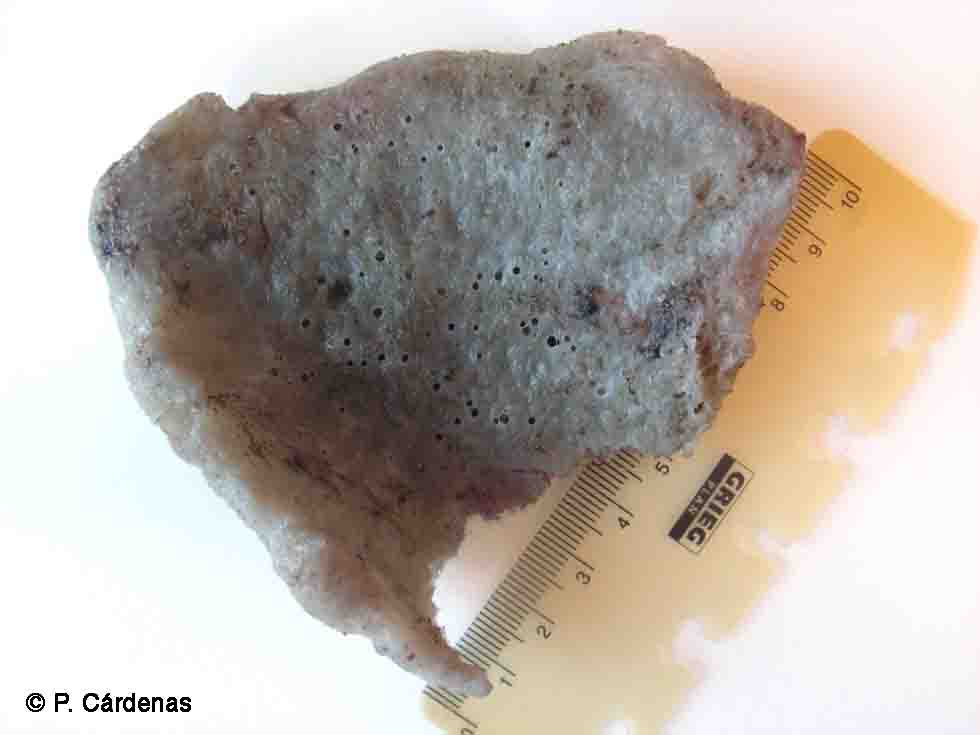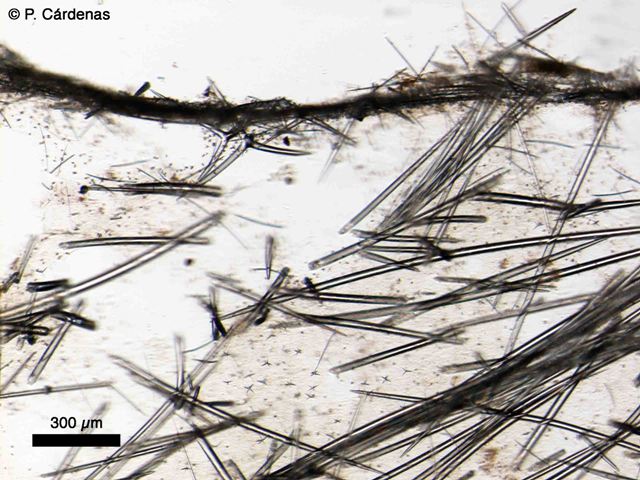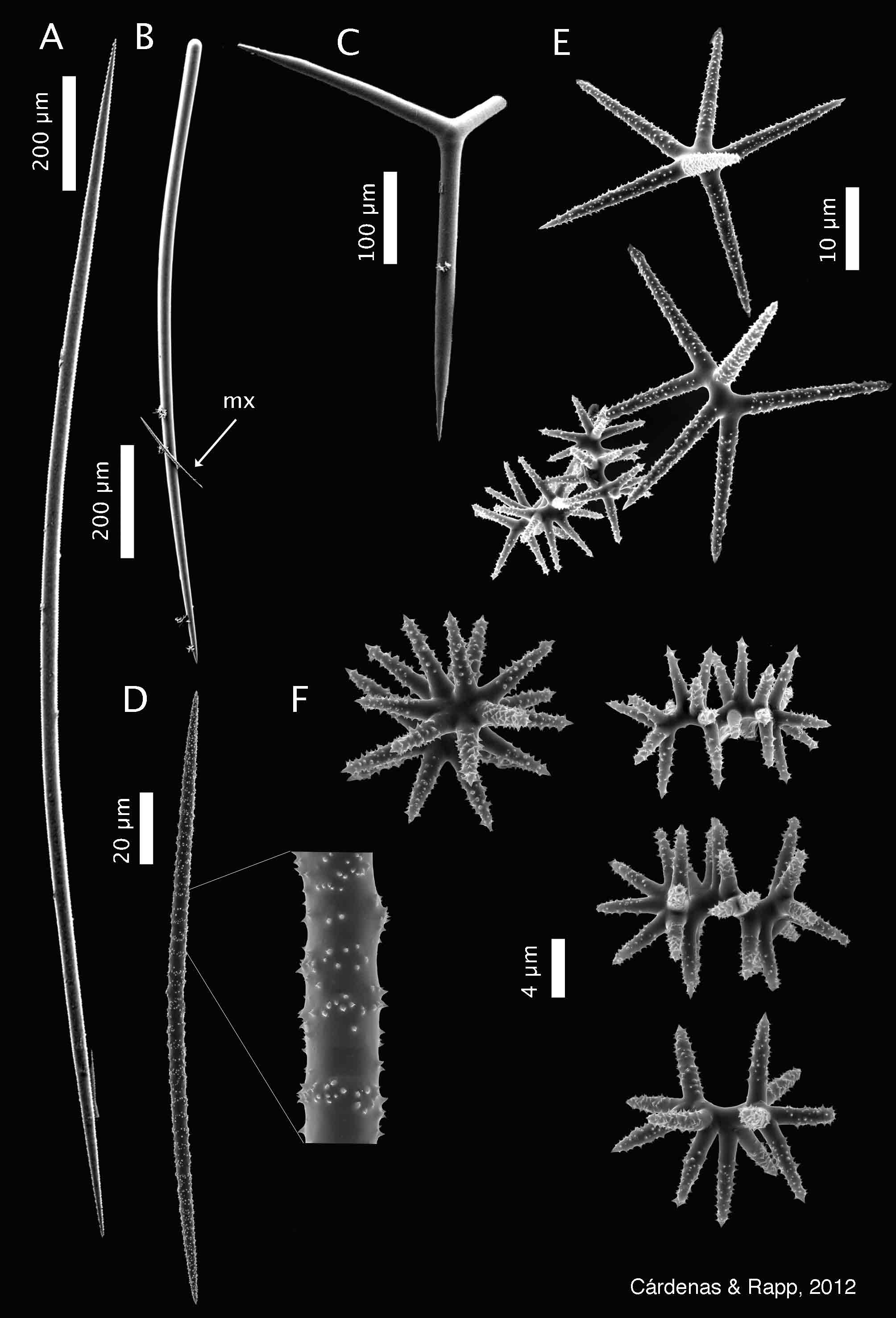Morphological description (show/hide)
| fan shaped | | grayish | | grayish | | Distributed on one side of the sponge | | bundles of oxeas parallel to the surface, otherwise confused with oxeas, microxeas and streptasters. | | accumulation of streptasters reinforced by paratangential triaenes, oxeas and microxeas. | | (a) oxeas I, stout, most are curved, sometimes modified to styles, length: 409-1068.4-2256 µm; width: 7.0-17.4-33.0 µm. (b) oxeas II, thin and pointy, bent or straight, length: more than 1200 µm; width: 2.5-2.7-5.0 µm. (c) ortho- and dicho- short-shafted triaenes (= pseudocalthrops), often irregular with deformities such as additional clads, rhabdome length: 223-297.3-420 µm (N=16); rhabdome width: 16.0-20.0-25.0 µm (N=16); clad length: 146.0-221.8-297.0 µm (N=16). | | (d) microxeas, in high numbers, microspiny, straight or bent, rarely centrotylote, length: 141-184.2-211 µm; width: 2.5-4.5-6.0 µm. (e) spiraster (most abundant) to metaster, microspiny actines, length: 11.5-16.3-23.0 µm; width: 9.0-12.6-21.0 µm. (f) plesiaster, 4-8 actines, microspiny actines, diameter: 22.0-36.9-51.0 µm. |
|
Reference (show/hide)
| Cárdenas, P., Rapp, H.T., Schander, C. & Tendal, O.S. (2010) Molecular taxonomy and phylogeny of the Geodiidae (Porifera, Demospongiae, Astrophorida) — combining phylogenetic and Linnaean classification. Zoologica Scripta, 39, 89-106. |
|





